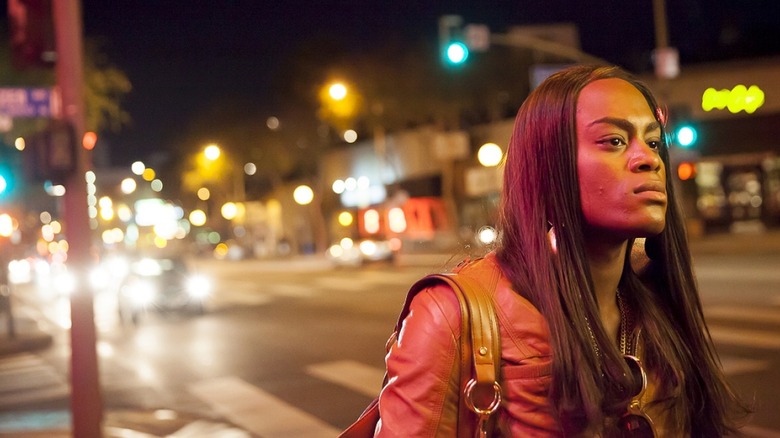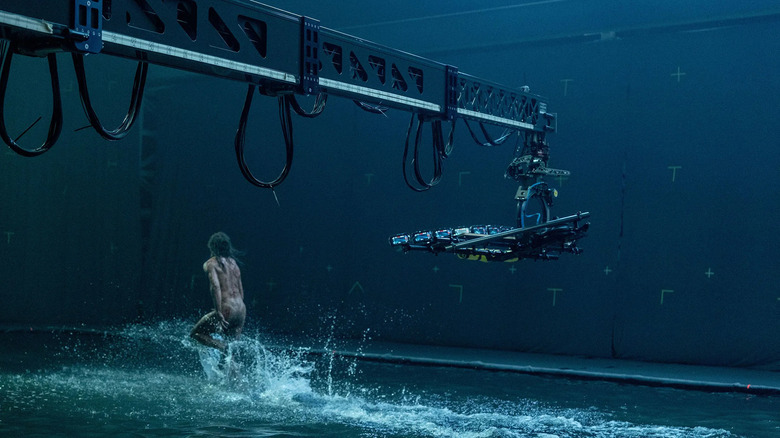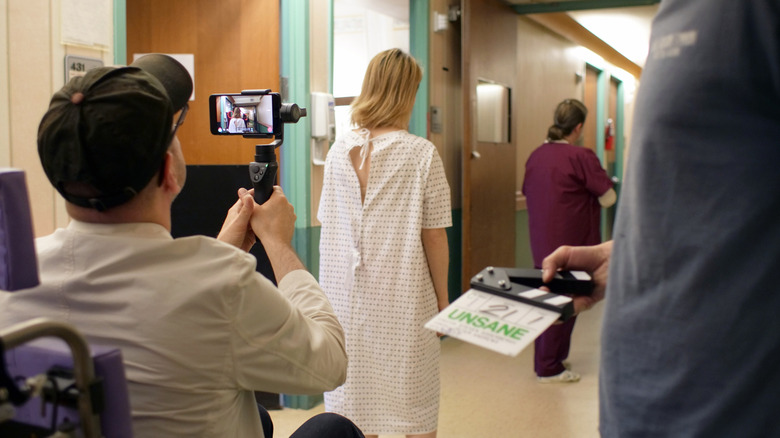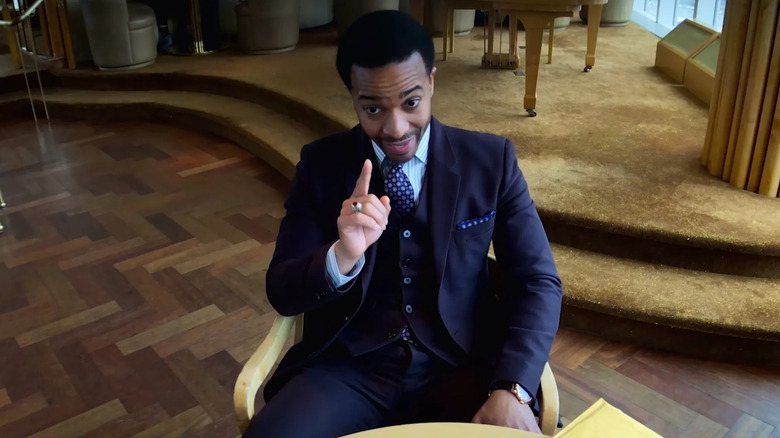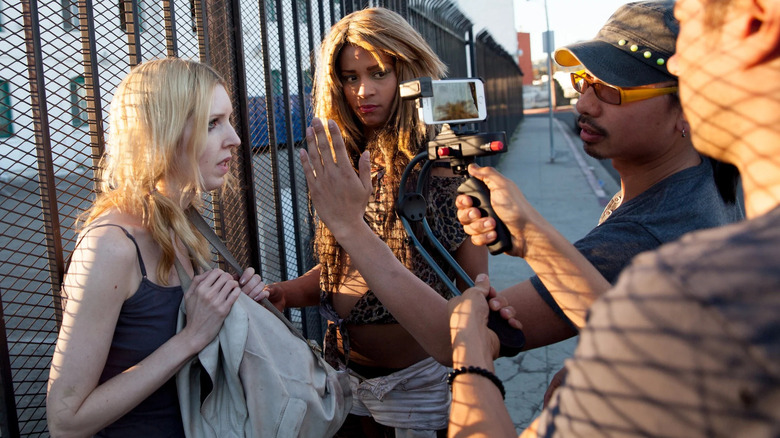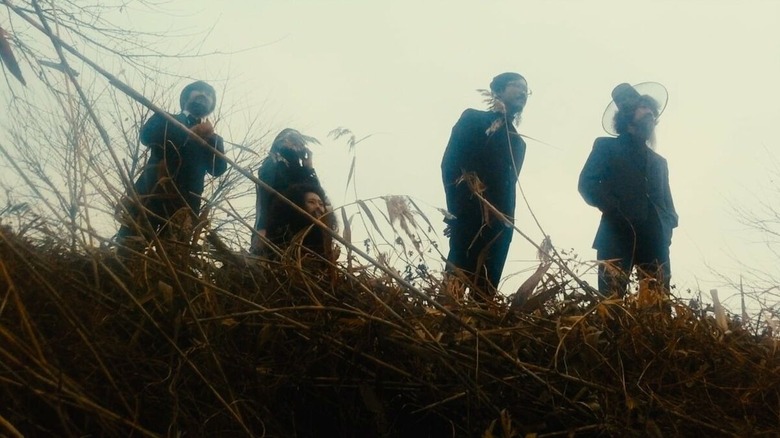5 Best Movies Shot On An iPhone
If one knows about the evolution of film camera technology, it can be fun to visually trace changing cinematic aesthetics. There was a time, very early in cinema history, when film cameras were so enormous and fragile that they couldn't be moved too freely. Filmmakers were forced to shoot nothing but wide, locked-down shots. Also, cameras could only hold so much physical film, forcing each take to be carefully choreographed in order to save the previous celluloid resource. Eventually, cameras became a little more limber, and engineers found ways to mount them on dollies, cranes, etc., allowing filmmakers to create more dynamic, fluid motions. Cameras continued to get smaller. Camera operators could pick them up and walk around with them. When the Steadicam was invented, a camera could now be safely mounted onto the camera operator's body, allowing for the most dynamic range of motion yet.
Then, when film was replaced by digital, the amount of physical celluloid no longer mattered. Digital cameras unbound filming entirely, and filmmakers soon had the ability to shoot extended takes on a camera that they could easily lift with one hand. Camera rigs became smaller and smaller. Image quality changed dramatically, of course, but by the time we got to the 2010s, cameras were so sophisticated that filmmakers could shoot whole movies on their mobile phones. We've walked a long road since the Lumiere Bros.
The first feature film ever shot on a mobile phone was the 2005 documentary "New Love Meetings," an Italian interview film about love, sex workers, and optimism, which was shot on the Nokia N90. Since then, several daring filmmakers have experimented with the iPhone aesthetic, testing if a tiny, pocket-sized camera can produce something truly cinematic.
The following films, presented in no particular order, prove that mobile phones are vital filmmaking tools for a new generation, and that striking, gorgeous imagery can be captured with them.
28 Years Later
Danny Boyle's recent horror thriller "28 Years Later" is the third part of a zombie series that began with "28 Days Later" in 2002. As the title implies, it has been 28 years since the outbreak of a "rage virus" that turns people into fast-moving, unthinking, cannibalistic monsters. The virus also seems to extend their lives indefinitely, leaving life very difficult and very dangerous for the scant survivors. "28 Years Later" takes place largely around a small isolated island in England, an island that is only connected to the mainland during low tide via a stone causeway. The main character is the young Spike (Alfie Williams) who treks to the mainland with his ailing mother (Jodie Comer) in the hopes that they can find a doctor to treat whatever seems to be killing her. Naturally, Spike, using his father's bow-and-arrow training, has to keep his mother and himself safe.
"28 Years Later" was filmed on the iPhone 15 Pro Max by cinematographer Anthony Dod Mantle. One might recall that Boyle and Mantle shot "28 Days Later" on a Canon XL1 consumer-grade digital camera, making for a roughly hewn, cheap-looking, and very immediate thriller. With "28 Years," Boyle and Mantle were clearly trying to recreate the shaggy, digital "you are there" look of the original. Cameras, however, have evolved so much since 2002 that "28 Years Later" actually looks natural and lush and vibrant. Mantle's team created custom rigs, including an array system that allowed them to shoot with up to 20 iPhones simultaneously. He explained one of the advantages of this in an interview with The Credits:
"Not only is the rig used to create this sort of violent blur of faces, but it is also a denial of informing an actor, or even me, for that matter, who's holding the camera, which specific frame is going to be used."
"28 Years Later" is a tragic, stirring drama about the pervasive nature of death, and the aching power of memorializing loved ones. The immediacy of the handheld camera phones make the film feel that much more authentic.
Unsane
Steven Soderbergh has long been interested in evolving film technologies, and was one of the earliest high-profile filmmakers to openly adopt digital cameras as a new tool in the toolbox. Soderbergh famously (or perhaps infamously) released his digitally shot 2005 film "Bubble" in theaters, on DVD, and for digital download on the same day, which was novel at the time. He has shot multiple films on digital cameras since then, experimenting not just with ultra-immediate camera movements, but enriched, often carefully color-tinted images. His thrillers came across as simultaneously natural and frantic as a result. The panic on screen was classic Hollywood, while the style hearkened back to indie resourcefulness.
Case in point: Soderbergh's 2018 psychological thriller "Unsane," starring Claire Foy. Foy plays a Bostonian woman who is trying to flee from a stalker, and who goes to see a psychiatrist at a local clinic to discuss her safety and her emotional well-being. She signs some forms in the clinic, unaware that she is checking herself into the hospital on a 24-hour-a-day watch. The hospital also takes away her ability to contact the outside world and locks her into a room. Foy must now prove something that can never really be easily proven: that she's not insane. It certainly doesn't help matters that her stalker may be working in the hospital.
It seems that she was the victim of an elaborate insurance scheme that incarcerates people in mental hospitals regularly. This adds an economic, bureaucratic element to "Unsane" that Soderbergh revisits frequently in his movies. "Kimi," "Magic Mike," and several others also involve the evil behind banal, everyday capitalism.
"Unsane" was filmed on an iPhone 7 Plus by cinematographer Peter Andrews.
High Flying Bird
It may be unfair to list two Steven Soderbergh films on this list, but if Soderbergh is so often using iPhones to shoot his movies, then, naturally, he's going to be a little overrepresented. Shot on an iPhone 8 by Peter Andrews, 2019's "High Flying Bird" is about a sports agent named Ray Burke (André Holland), who has a plan — and boy-howdy, is it complicated. Basically, Ray is losing money because of a series of bad opportunities, and has just run headlong into a lockout of the entire basketball industry. He has 72 hours to pull off his elaborate scheme, weather his various personal relationships, survive a Twitter beef, and claw his way back into the spotlight.
Soderbergh couldn't have predicted the COVID-related lockdowns that came into full swing the following year, so "High Flying Bird" feels prescient. The iPhone cinematography makes "High Flying Bird" look like it was shot by the characters in the movie. This isn't just their story, we're also seeing it through their eyes. It's an up-to-the-minute drama about Twitter battles and online living, and the modern state of basketball fandom (and business), so it's appropriate that it should look like it was being shot by an intern who was standing right next to Ray and all the other characters. We become performative when we know we're being filmed, and we're being filmed all the time. "High Flying Bird" almost feels like a documentary, even more so than the other films on this list.
Also, the film boasts excellent performances from Holland and Zazie Beetz, playing Ray's former assistant, Sam.
Tangerine
Perhaps the best entry in this list, Sean Baker's 2015 film "Tangerine" sports one of the more visually accurate depictions of Los Angeles ever filmed. Most movies about L.A. depict a romantic angle of the city, whether well-moneyed or impoverished. "Tangerine," set in a dingy area of Hollywood down the street from the Hollywood Forever Cemetery, concerns the lives and struggles of Sin-Dee Rella (Kitana Kiki Rodriguez) and Alexandra (Mya Taylor), a pair of trans sex workers who are barely making ends meet. Sin-Dee has just been released from a month-long stint in prison, only to find that her boyfriend/pimp is having an affair with a cis woman. Alexandra, meanwhile, hopes to make money singing and performing, clearly wearying of her life as a sex worker.
Sean Baker has always had a sympathetic eye for sex workers, all the way through to his Best Picture-winning film "Anora" in 2024. Sex workers, he feels, are too often shamed and pilloried by society, and he often aims to recapture their humanity and dignity. Sin-Dee and Alexandra have to struggle every day just to keep their humanity intact in the face of a grimy, cruel, smoggy Hollywood. "Tangerine" isn't just the best film on this list; it may be Baker's best film as well.
"Tangerine" was filmed on an iPhone 5S by Baker and Radium Cheung, and it looks it. But Baker's lo-fi cameras do something notable with light and images that make the ugliness of Hollywood feel that much more revolutionarily real. This is the real world, and the orange sunsets and stuck-gum grays communicate that.
Night Fishing
One can watch Park Chan-wook's 2011 short "Night Fishing" on Philo TV. The film is only 33 minutes long, but, like most of Park's works ("Oldboy," "The Handmaiden," "Decision to Leave"), it's stylish, energetic, weird, violent, bleak, and exhilarating. "Night Fishing" is a work of surrealism, so one will have to merely describe what happens on the screen, rather than describe a plot. The short opens with the performance of a rock band out in the wilderness. The action then cuts to a fisherman (Oh Kwang-rok) setting up camp by the edge of a river in the middle of the night. He unexpectedly snags the dead body of a woman (Lee Jung-hyun) who is tangled up in his fishing line. She springs to life, and knocks the fisherman unconscious. When he comes to, the two enjoy a meal of fish by the river. She reveals herself to be a shaman, and mocks him with memories of his daughter.
The action then shifts to a funeral ritual, where it's revealed that the fisherman died in a river, and is now being evoked via a seance. The film is dizzying, wild, fun, and equal parts eerie rock-n-roll.
Park filmed "Night Fishing" on an iPhone 4, enhanced with specialized lenses. Because of the early iPhone model, the photography is grainy and gritty and deliberately low-quality. It evokes the experimental look of an 8mm film, but with a modern, digital edge. "Night Fishing" is also just an intense, wild, horror tale that overlaps two ghost stories into one. The funeral sequences feel like your eyeballs are peeling. Check it out.
